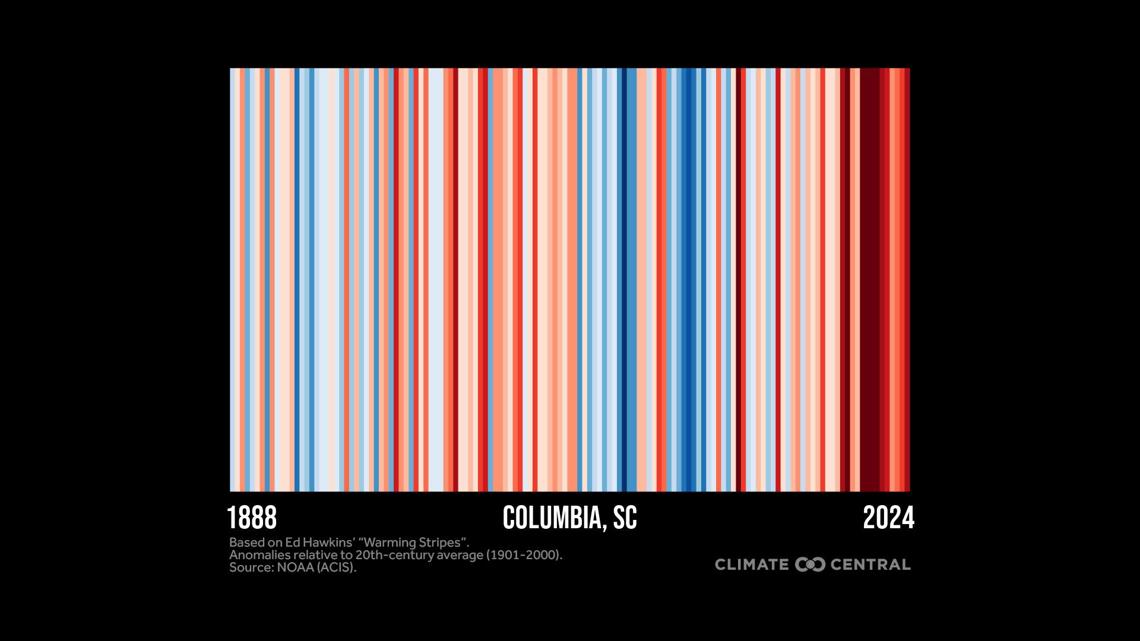The purpose of Show Your Stripes Day is to spread awareness about climate change by showing temperature trends over the last 100+ years.
COLUMBIA, S.C. — Show Your Stripes Day is a global campaign to spread awareness about climate change using "warming stripes" graphics. This iconic climate data visualization will appear across numerous locations as the world unites to show their stripes on June 21.
The purpose of Show Your Stripes Day is to spread awareness about climate change by showing temperature trends over the last 100+ years.
Each colored stripe represents the annual average temperature relative to a long-term average. The red stripes are years that were hotter than average. The blue stripes are years that were cooler.
The strong red shift reflects rapid warming in recent decades. Below are the warming stripes for Columbia, South Carolina.


According to Climate Central, global temperatures shattered records in 2023 and 2024 by such wide margins that it's forcing an expansion of the warming stripes color scale earlier than expected.
The graphic below shows how our actions today will determine what color stripes younger generations will live through the century as warming continues.


There are solutions for a cooler, safer future.
Talking about climate change is one step, and warming stripes are a great climate conversation starter. Research suggests that communicating about the human causes of climate change increases public awareness and engagement.
The U.S. produced a record amount of electricity from solar and wind in 2024 - enough to power the equivalent of more than 70 million average American homes.
Heat-trapping emissions have already decreased in most U.S. states since 2005, though not nearly fast enough to align with global ambition to keep global warming under 2 degrees Celsius.
The solutions needed to accelerate these recent trends by cutting carbon from transportation, electricity, agriculture, and industry already exist - and have the potential to expand across the country.









 English (US) ·
English (US) ·